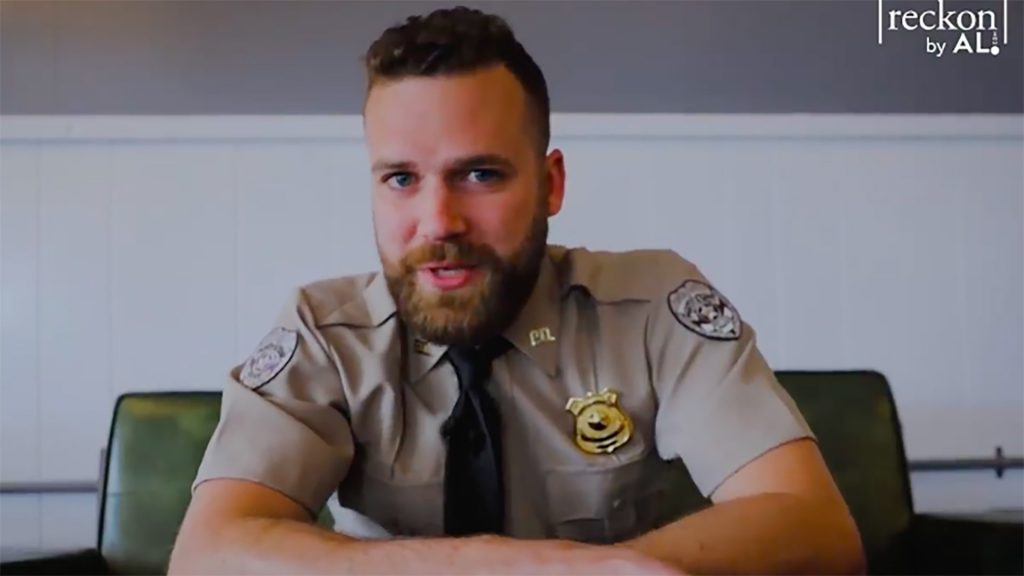
“TV stations tend to stay in their swim lanes, but the audience is using the whole pool.”
Those wise and scary words come from our Lab colleague Frank Mungeam. We were talking about Chasing Corruption, an original series funded by Facebook for its Watch service and produced by the Alabama Media Group.
Hearst, ABC, and TEGNA all have strong Facebook-funded shows on Watch too, as we reported last November. They probably don’t think of the Alabama Media Group, which still owns three newspapers in the state, or its digital-media arm AL.com as a competitor — but they probably should.
As video viewing shifts from TV to digital platforms, station groups are doing battle in a new arena, against new challengers. And while local TV newsrooms have decades of experience with video, they can also be trapped in their storytelling ways — their “swim lanes” — while others experiment and innovate around them.
Chasing Corruption is a prime example.
AL.com had already established its place in the video sweepstakes with lighter lifestyle and entertainment fare like This is Alabama and It’s a Southern Thing, whose sketch-comedy show So True Y’all attracts millions of Facebook views. “Our video work has led to the biggest engagement we’ve ever seen,” says Michelle Holmes, Alabama Media Group’s Head of Partnerships and former VP of Content. “Chasing Corruption was an effort to turn that deep connection to the most serious and among the most significant work that we as journalists do.”
That work is exposing corruption in high places and getting something done about it. Chasing Corruption is produced by AL.com’s issues-focused Facebook brand Reckon, which describes itself as “a place for big ideas and tough conversation about Alabama.” But this show ranges across the country, reporting on reporters — local investigative journalists who have broken big stories and effected meaningful change, such as sending corrupt officials to prison. As the hipster-ish host says at the beginning of each of the ten episodes, “My name is Ian Hoppe, and I’m here to show you why local reporters matter.” Facebook’s Josh Mabry, who helped greenlight the project, echoed that thought in an email, “Helping folks understand the process of high quality journalism is important.”
So the subject matter is straightforward and high-minded. But the look and feel? Let’s just say — “distinctive.” Chasing Corruption uses what Facebook’s Mabry calls a “clever narrative style and stimulating visuals” to bring its case studies, some of which date back several years, to life. And Hoppe, whose day job is “managing producer” of news video at Alabama Media Group, works hard to be overtly entertaining in ways that no news anchor would (or in my view should) ever attempt.

You’re never going to see WVUE’s buttoned-down investigative star Lee Zurik — himself a subject of one of Hoppe’s flattering portraits — open a show hanging upside down from the monkey bars in a children’s playground, and we are all grateful for that. But Hoppe and Holmes are playing by different rules. Hoppe even goes so far as to wear costumes to fit the subject matter: a sheriff’s uniform in a program about a corrupt Kentucky sheriff, prison fatigues in a show about trouble in Mississippi’s prison system. “Ian’s costumes make [the show] feel relevant to people’s lives, interesting,” says Holmes. “How can we be serious journalists while also saying you have a ton of stuff you could be doing with your time, come spend it with us.“

Holmes says her team wasn’t overtly targeting any particular demographic, but Hoppe’s youthful sensibility and disregard for convention are no accident. “If I have a host and his friends don’t want to watch the show, I’ve probably failed,” says Holmes. “We’re happy to entertain and inform and educate and inspire all at the same time.”
What’s the lesson for local TV newsrooms? One question is how far you are willing to stray from the norm — and what risks you are willing to take — to test new ways to tell stories and engage with viewers, especially the new viewers you need to attract in order to thrive. “For us, this was a huge stretch in voice,” says Holmes. But “when you see a chance that aligns with something that needs to happen next, run full force at it.”
In this case, it certainly helps that Facebook paid the bills. But AL.com has formed a production arm to do more of what Holmes calls “modern TV-style programming.” That means new competitive challenges ahead for TV stations that have had the news video landscape pretty much to themselves forever. “We see an unlimited opportunity to play across all fields right now, and that’s really exciting,” says Holmes. “But that’s open to everybody.”
In other words: Objects in mirror are closer than they appear.
Tell us about some ways in which you’ve ventured out of your comfort zone, and we’ll check them out at cronkitenewslab@asu.edu.
[Disclosure: Andrew is also affiliated with the MIT Media Lab’s Laboratory for Social Machines and its nonprofit spinoff Cortico, which are working on an unrelated project with AL.com.]

